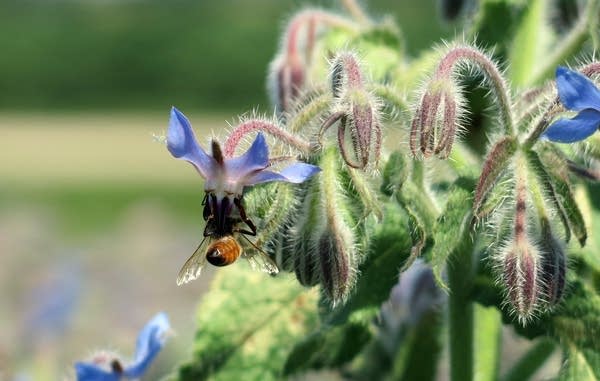Big buzz about program to turn lawns into pollinator habitat

Go Deeper.
Create an account or log in to save stories.
Like this?
Thanks for liking this story! We have added it to a list of your favorite stories.
The program hasn't officially started, but Dan Shaw is getting a lot of calls from people wanting to turn lawns into pollinator habitat.
What’s called the Lawns to Legumes program received $900,000 in funding this year from the Legislative Citizen Commission on Minnesota Resources. The initiative aims to help homeowners convert lawns to perennial native plantings, and Shaw is helping develop the program as senior ecologist for the state Board of Water and Soil Resources.
"We've been hearing from a lot of landowners that really just want to get started on habitat with or without cost share funding, so we're trying to address the diverse needs that we've been hearing from land owners that are interested in the program," Shaw said.
The three-year pilot program will have several components, but will begin with at least 20 workshops around the state starting this fall. The program will also be showcased at the Minnesota State Fair.
Turn Up Your Support
MPR News helps you turn down the noise and build shared understanding. Turn up your support for this public resource and keep trusted journalism accessible to all.
Over the winter, homeowners will be able to apply for roughly $700,000 in cost share funds for pollinator habitat projects. A priority area for the funding will be where endangered rusty patched bumble bees live, primarily areas around the Twin Cities.
"For people that are within the rusty patched bumble bee zone they'll be eligible for $500," said Shaw. “People in our secondary pollinator corridors in the state will be eligible for $350, and then people outside of those two areas will be eligible for $150."
Meet the rusty patched bumblebee, Minnesota's new bee ambassadorThe goal is to create a lot of small areas of habitat in both urban and rural residential yards that will provide food and shelter for bees and other insects.
"There is research showing that even small plantings can provide a lot of benefit for pollinators, especially if we have enough of them and can create a matrix of the habitat, it can provide a lot of benefits for different pollinators," said Shaw.
Replacing manicured lawns with perennial plants can also improve water quality by reducing fertilizer runoff from lawns, and the plants provide habitat for birds and other wildlife.
The Board of Water and Soil Resources is the lead agency for the program, but is teaming up with Blue Thumb Partners, a coalition of public and private groups offering guidance and funding to promote landscapes that help protect water quality.
"We really think that for this program to be successful, we need a really large collaboration of conservation partners around the state involved, to help with outreach,” Shaw said. “I really feel that there's an opportunity here to really expand the amount of habitat within residential land."
One challenge might be that many cities have ordinances that regulate how lawns must be maintained. They often limit the height of lawn plantings.
Shaw said the agency is working with cities to develop a permit so homeowners can replace turf with native plants without running afoul of local laws.
People who participate in the program will get a sign marking the plantings as pollinator habitat.
A key component of the program will be neighborhood demonstration projects created by local groups to showcase residential pollinator habitat.
"We want to set this up in a way that we can create really good demonstration projects, showing examples of high quality pollinator habitat in different types of landscapes using different plantings,” said Shaw. “And then hopefully expand that to a much greater extent in the future to really get as much pollinator habitat to residential landscapes as we can but then also park lands and commercial lands.”
Shaw said funding for residential pollinator habitat is unique, and in addition to the high level of interest from Minnesota homeowners, he's been fielding calls from across the country from people wanting more information about the program.


